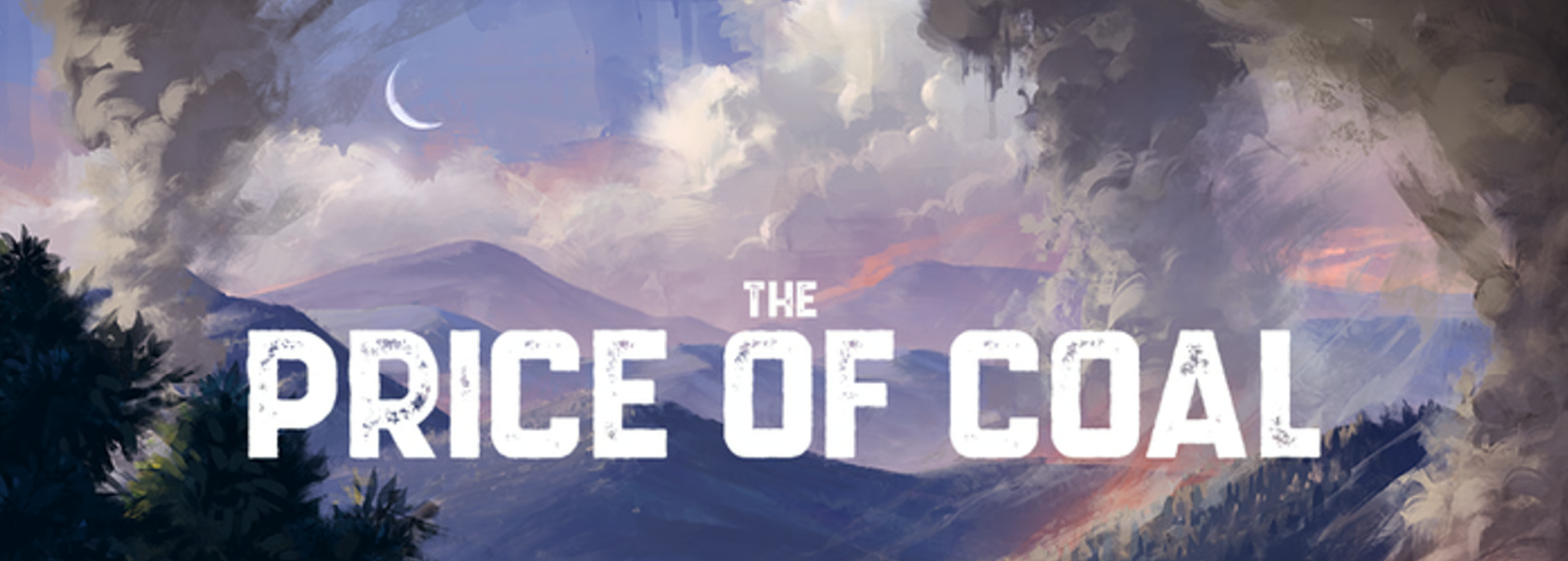Price of Coal is a GMless story game about labor rights, based on the historical period leading up to the Battle of Blair Mountain in West Virginia, USA.
Mechanically, it’s a mix of Fiasco and The Quiet Year. Each player controls two characters, one who is a miner, and one who is a supporting character from the town. Each player takes turns drawing a tarot card and framing a scene based on the prompt. This is repeated several times through each season, leading up to the Battle of Blair Mountain at the end.
Thematically, the game reminds me of This War of Mine, a game I usually describe as a resource management game where the only resource is your own sadness. The Price of Coal is not a happy game. It tells you from the start that there is no winning, there is only surviving, up until the inevitable battle where the miners are set upon by the full might of the army of the United States of America. There will be bloodshed, and it wll not end well for you.
Knowing all of this, I expected to love this game. I’m a sucker for a sad story, and I love games rooted in real history. Unfortunately, this game was a miss for me.
I was excited when looking over the characters presented. Kit Parsons struck me immediately, a woman who had been masquerading as a man. What a life they must have led! Unfortunately, I soon realized that these weren’t characters rooted in history, but pastiches, broad strokes of what might have been. This dampened my enthusiasm somewhat, but only slightly. We were going to be taking our own roles on the characters, so the deviations had to start somewhere.
The comparison to This War of Mine grew weaker the more I played. This game isn’t as sad (though it’s by no means a happy game!) and is on tighter rails, though the rails are less visible. Where This War of Mine will ask whether or not you steal medicine from another family, the Price of Coal will give you an open-ended prompt to act out. Sometimes these prompts would shape the story — we ended up with evicted coal miners living in the schoolhouse after it had been shut down once the only teacher in town left — but other times we had to dance around wanting to strike as the game wasn’t prepared for that action.
One player hadn’t realized the union was in place, as we thought the arc would be creating a union, and facing the backlash from its creation. This expectation mismatch caused some friction, and we often had a little bit of retconning as we read each card, realizing that we had butted against history or the shape of the story this game wanted to tell. Admittedly, the union point could have been fixed by more carefully internalizing an early overview card, but other points of friction could not have been avoided so easily. One player spent multiple scenes wanting to strike, but feeling like he needed to engineer a reason why that wasn’t feasible.
The highlight of the game is its relationship chart. Each character comes with prompts that are used to tightly weave the cast together. The prompts and instructions around them are phrased in a way that we found to be ambiguous, where it wasn’t clear which direction the relationships went. “Am I bribing you, or are you bribing me?” was the shape of many questions during the start of the game.
Overall, it didn’t feel like we had much agency in this game, and it went on a touch too long with the number of scenes in each season. The replayability is low, but not nonexistent, as you are instructed to cut some of the cards from each season. THe game would be improved for both pacing and replayability if one additional card was removed, but I don’t know that I’d play it again either way.
Playing the game with 3 players, we barely used the interstitial cards, as if two players wanted a scene together, the third would often just fade into the background.
I hesitate to give a score to this game, as that implies an objective rubric I do not have. I will say that this game was hard to pitch, but I was excited for it, and left disappointed. I had hoped it to feature real historic characters, and have either much more agency, or much tighter guardrails around the story. I do not expect to play it again, and will likely soon prune it from my collection as a result.
